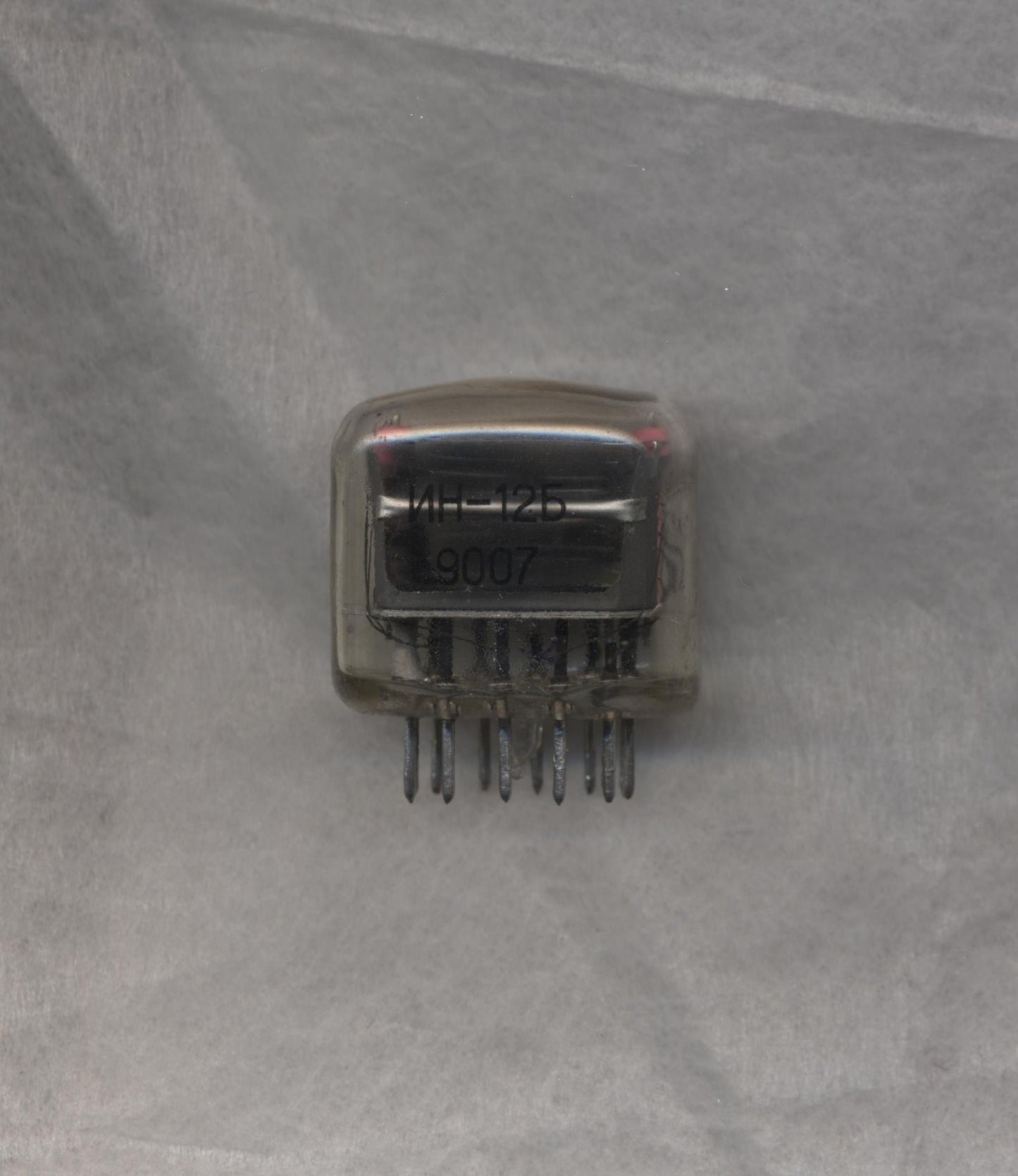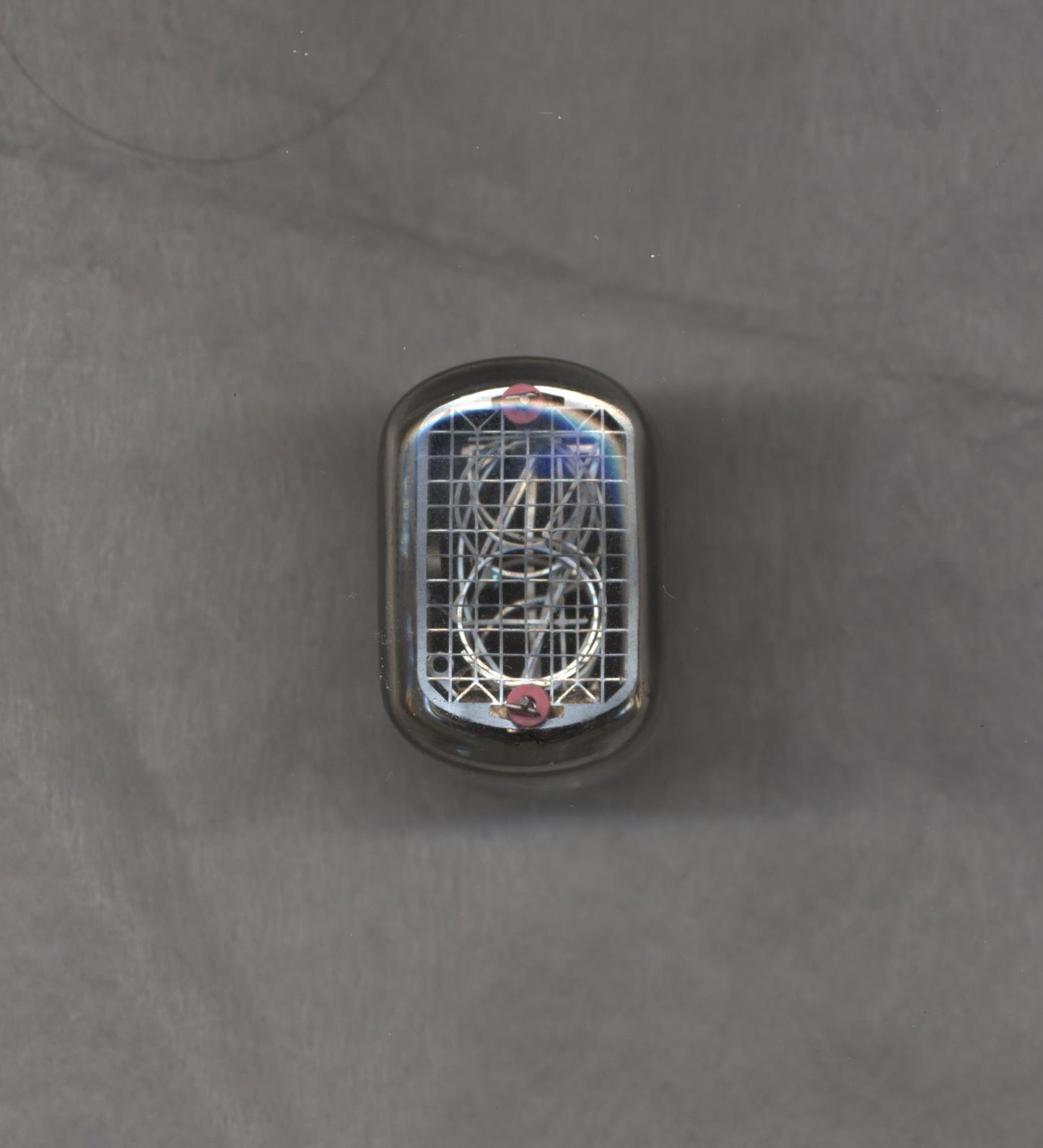1
/
of
2
IN-12B Large One-Digit Nixie Tube
IN-12B Large One-Digit Nixie Tube
No reviews
Regular price
$8.00
Regular price
Sale price
$8.00
Unit price
/
per
Shipping calculated at checkout.
Couldn't load pickup availability
- Length 31 mm
- Width 21 mm
- Height 28 mm
- Weight 15.0 g
IN-12B is a type of nixie tube, which is an electronic display device that was used in various electronic equipment from the mid-20th century. Nixie tubes are known for their distinctive retro appearance and are often used in vintage or retro-themed projects. Here's some information about the IN-12B nixie tube:
Digits: The IN-12B nixie tube can display the digits 0 through 9. Each digit has a unique arrangement of neon-filled segments, which light up to form the desired number.
Gas Filling: Like all nixie tubes, the IN-12B contains a mixture of noble gases, typically neon and a small amount of argon, which emit the characteristic orange glow when an electrical current is applied. These gases are sealed inside the glass envelope.
History: IN-12B nixie tubes were manufactured in the former Soviet Union (now Russia) during the 1970s and 1980s. They were used in a variety of applications, including scientific instruments, test equipment, and clock displays.
Power Requirements: IN-12B nixie tubes require a high voltage (usually around 170-180 volts) to operate. This voltage is necessary to ionize the gas inside the tube and create the glow. Additionally, they require a lower control voltage for selecting and displaying digits.
Driving IN-12B Tubes: To display numbers on an IN-12B nixie tube, you need to use specialized driver circuits that provide the high voltage and control signals. These tubes are often controlled using multiplexing techniques, where individual digits are lit up in quick succession to display the desired number.
Digits: The IN-12B nixie tube can display the digits 0 through 9. Each digit has a unique arrangement of neon-filled segments, which light up to form the desired number.
Gas Filling: Like all nixie tubes, the IN-12B contains a mixture of noble gases, typically neon and a small amount of argon, which emit the characteristic orange glow when an electrical current is applied. These gases are sealed inside the glass envelope.
History: IN-12B nixie tubes were manufactured in the former Soviet Union (now Russia) during the 1970s and 1980s. They were used in a variety of applications, including scientific instruments, test equipment, and clock displays.
Power Requirements: IN-12B nixie tubes require a high voltage (usually around 170-180 volts) to operate. This voltage is necessary to ionize the gas inside the tube and create the glow. Additionally, they require a lower control voltage for selecting and displaying digits.
Driving IN-12B Tubes: To display numbers on an IN-12B nixie tube, you need to use specialized driver circuits that provide the high voltage and control signals. These tubes are often controlled using multiplexing techniques, where individual digits are lit up in quick succession to display the desired number.




